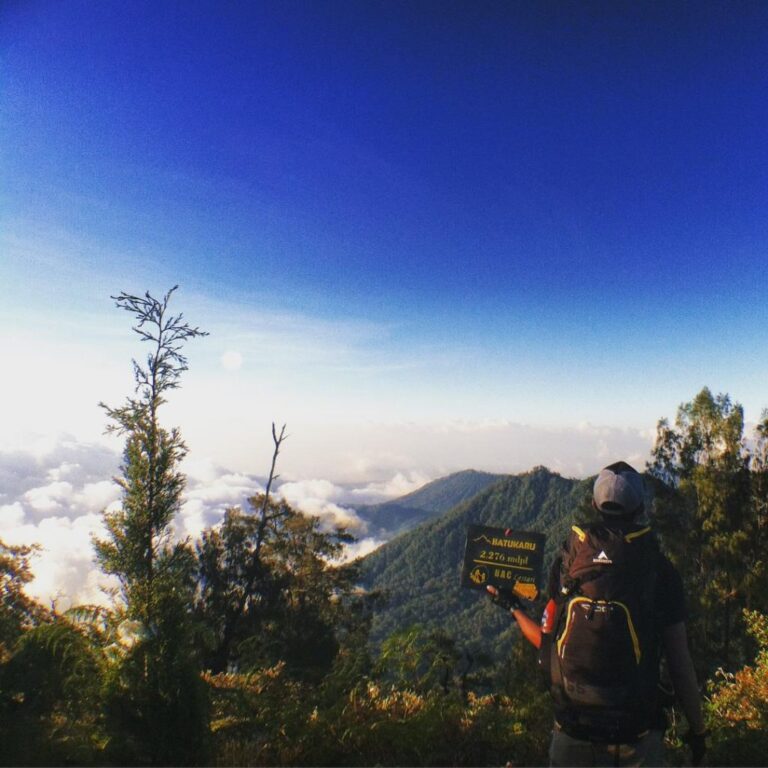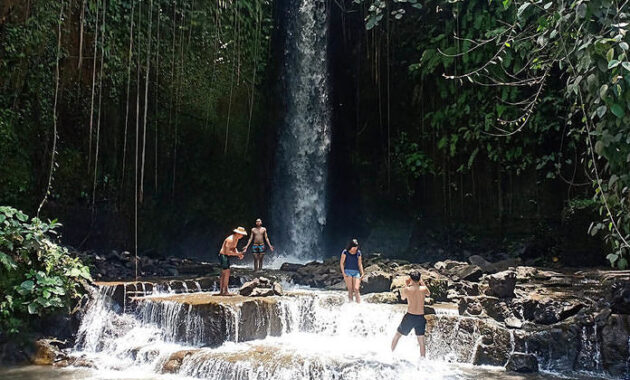If one day enjoying your day trip around the island you notice a nasty reaction your skin had to something unknown, and it itches and kind of hurts, local friends will inform you that you’ve met a tomcat insect.
Toxic little rove beetles that don’t actually have anything against human skin but happen to cause us quite a bit of trouble. Often invisible and pretending to be just a large ant, they hide in Bali’s rice paddies and humid weather and leave burn marks on unsuspecting Bali tourists.
Here is our complete guide to understanding the tomcat beetle and how to avoid getting tomcat burn or quickly treat it while in Bali.
What Is A Tomcat In Bali?

Paederus Riparius aka Tomcat is a small poisonous rove beetle that looks like a long ant with a pointy posterior. On average they are 1.5-2 cm long.
However, very easy to tell apart from an ant: a tomcat’s body has a black head, centre and back part and two orange (light-brown) body parts. They have tiny black wings and long a bit hairy legs. Sometimes they have a distinctive red-orange line on their wings.
They carry toxic venom that they leave with urine on any surface they touch or want to mark. Any interaction with this venom causes severe skin irritation scientifically known as Paederus dermatitis.
But they are not considered pests! Tomcats actually kill pests in the rice fields so apart from being toxic, they do help farmers to keep the crops healthy.
What Is The Venom Of A Tomcat Bug?
The Tomcat venom is called Pederin toxin and is produced by an endosymbiotic bacteria in the insect’s body. Tomcats hunt other insects so they use the toxin to mark the territory and to kill.
That poison is actually 12 times more potent and dangerous (and lethal) than cobra venom but because the tomcats can’t bite into the skin and poison our blood, we only suffer from superficial exposure to the toxin. Phew!
Tomcats leave the venom on literally anything from tables to towels to our bodies. It affects both our skin and eyes.
What Are The Symptoms Of A Tomcat Bite?
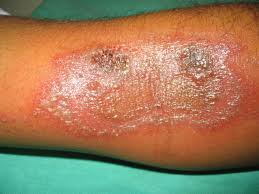
It is a common misconception that tomcat beetles bite. They don’t bite or sting like mosquitoes, but what causes all the troubles is the toxic trace these insects leave on anything they touch or if they are accidentally crushed.
A better way to describe it would be a “tomcat burn“.
If you were in contact with tomcat venom the following symptoms can be of varying severity:
Red rashes that are itching, and getting worse day by day.
Blisters (like Herpes blisters), in severe cases ulcers. Blisters can ooze some pus too.
Burning sensation and visible skin irritation.
Visible red lines over the body, that look like something touched you.
If your eyes come in contact with the toxin, it may lead to conjunctivitis.
Rare: secondary infection of the wound or blindness if it got into the eyes.
Usually, the lesions, pain, and itchiness pass within 8-12 days. The blisters dry out and the skin irritation calms down.
If it doesn’t happen, seek medical attention and treatment immediately.
Do Tomcat Bites Hurt?
Tomcat venom causes a burning sensation and is quite painful depending on the scale and individual pain tolerance can last for a few days, weeks or even months as the toxin can survive for many years after exposure.
The rash will get more intense day after day, and the pain and itching can be unbearable for people with sensitive skin.
Even once the irritation and the blistering pass, you can be left with some scars.
How Do You Treat A Tomcat Bite?
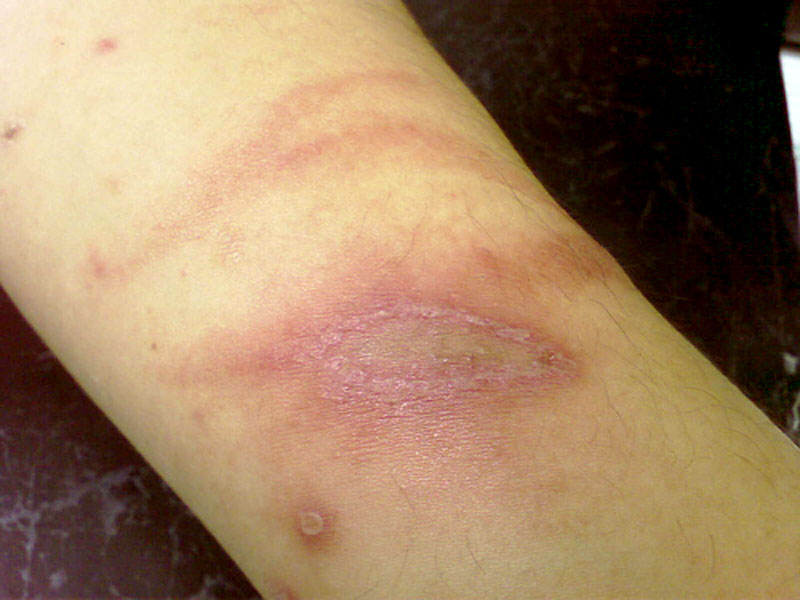
If you notice tomcats around and suspect a bite or venom contact, immediately wash the area thoroughly with cool soapy water. Then apply something cool to ease the burning feeling.
If the blistering burning sensation has already spread to a larger area you may need to see the doctor and get a steroid cream (1% hydrocortisone cream or acyclovir 5%) to treat the irritation and some antihistamines to help with inflammation.
You will find them at any local pharmacy but often they don’t really help much. The lesions take time to heal naturally and the toxin is just very potent to be easily removed.
Do not touch the affected area with your “healthy” hands as the venom will spread to those hands and also may travel to any other parts of your body you will touch with that hand afterwards. Put on some gloves and wash your hands.
In rare cases, the toxin provokes vomiting, headaches and fever, the blistering can create wounds and infections, so the doctors will prescribe you antibiotics. There are a few clinics in Bali that can do IV antibiotics at your house.
Do not use traditional or homemade remedies as they may significantly worsen the situation and the pain.
Tips On How To Avoid Tomcats in Bali
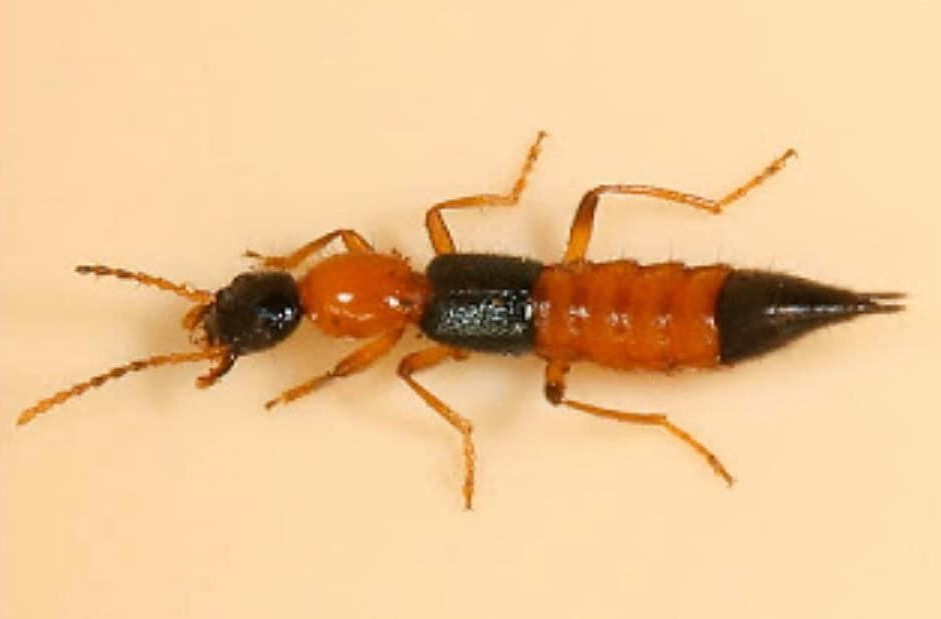
Unlike avoiding mosquito bites and dengue, it is not enough to just put bug spray on your skin to protect yourself from tomcat beetle bites or venom.
- For outdoor areas use incandescent or halogen lights as regular artificial light may attract tomcat beetles at night.
- Tomcats love moist habitats. So they are more commonly found during the wet season and near places with standing water like rice fields and natural ponds.
- Tomcat beetles are night insects so keep everything closed at night or at least have a mosquito net over your bed as many tomcat burn cases happen overnight.
- If you see a bug or a colony, do not touch them, but rather spray with the big bugs spray and sweep them away with a broom. Wash the broom.
- If you’re unsure whether tomcat beetles found their way into your wardrobe or suitcase, wash everything before wearing them.
- In absolute majority of the cases, people don’t even see or know when and where they come into contact with the venom. Even simply leaving your phone on a table the beetles passed by can cause the burn. It is best to keep your belongings in your sight and don’t leave them in strange spots, especially while you are in wild nature.
- If you already have blisters do not open them up or scratch! The fluid from the blisters can contaminate nearby skin.
- If you see a tomcat beetle in the wild do not kill or crush it with your hands or feet. It will release the coelomic fluid (a strong blistering chemical) that contains the toxic venom and you will get it on your legs or hands.
- Maintain your house and garden in order and clean.
Final Thoughts
To be fair, tomcats are still quite rare in Bali and you may as well never see this small insect and hopefully never experience the burn.
However, Bali tourists should not let anything ruin their vacation in this paradise, so come prepared, especially if travelling during the rainy season, and remember that you’re in the middle of the tropics, so cover the skin on day trips and sleep with closed windows and under a bed net.
Also read:
Scorpions In Bali: Are You In Danger? What To Do In The Case Of A Sting
Animals In Bali: Your Guide To All The Animals And Their Natural Environments On The Island



